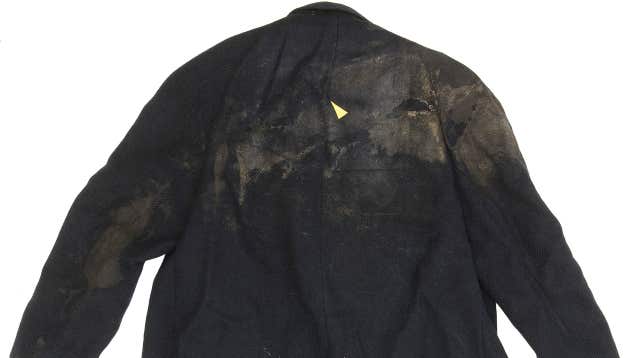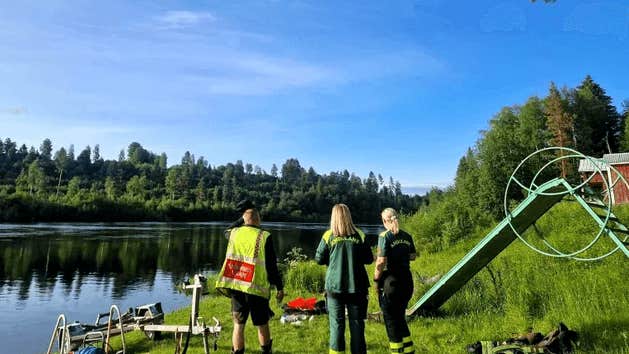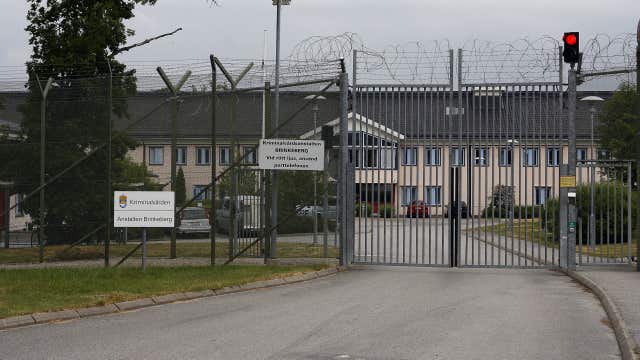Olof Palme’s clothes destroyed as evidence
Olof Palme’s outerwear is no longer with the police as evidence.
– Outrageous, says retired police commissioner Jan Olsson about the news.
However, the Palme couple’s clothes are not destroyed but are being stored in a secret location, Expressen can reveal. Latest news clips from Expressen.
Olof and Lisbet Palme’s outerwear was previously with the police and the National Forensic Center, NFC, in the hope that future technology would be able to identify biological traces of the murderer on Olof Palme’s clothing. Traces that could then match any of the people who have been involved in the investigation.
The article in brief
• Olof Palme’s outerwear is no longer available as evidence with the police.
• The clothes are now stored in a secret location.
• The decision to return the clothes was made when the murder investigation was concluded in 2020.
• There is criticism that the police did not keep the clothes for future DNA analysis.
However, the seizure of the clothes was lifted when Chief Prosecutor Krister Peterson decided to close the murder investigation on June 10, 2020. This means that they can no longer be used as evidence.
The clothes, apart from the two murder bullets, are the only technical evidence linked to the murder.
The overcoat that Prime Minister Olof Palme was wearing when he was shot to death has been a common thread throughout the murder investigation ever since the evening of the murder on February 28, 1986.
The more time that has passed since the murder, the more important the clothes have become to the investigation. Perhaps the answer to who murdered the prime minister that late February evening could be found in DNA traces that, with refined technology, could someday provide the answer.
The clothes have been the last big hope.
When Olof Palme was shot, he was hit in the back, between the shoulder blades, and the bullet entered through the back seam of Olof Palme’s coat. The distance was estimated to be between 10 and 30 centimeters. The perpetrator then quickly fired a second shot that went along and touched Lisbet Palme’s back from a distance estimated to be between 70 and 100 centimeters.
The killer’s DNA fingerprint?
It was a particular detail that made investigators continue to insist that the clothes could be crucial.
Witnesses stated after the murder at the Sveavägen-Tunnelgatan intersection that they thought they saw the murderer place one hand on Palme’s right shoulder before he collapsed. And it is the laying on of hands that the police DNA experts had pinned their hopes on.
“Shocking”
Expressen has spoken to several former Palme investigators who are both surprised and upset that the seizure of the clothes has been lifted.
– Shocking to hear. Sonny Björck, a forensic scientist, and I went to the then SKL in Linköping and did a reconstruction with the clothes, among other things to try to get an answer to whether the perpetrator tried to shoot his wife or whether the shots were aimed at Palme. We did a reconstruction and treated the clothes in the way that should be done with a view to future investigations, says retired criminal inspector Jan Olsson, who was part of the police’s Palme group and has extensive experience in forensic work.
When Chief Prosecutor Krister Peterson was to hold the press conference where a result would be presented, Jan Olsson believed that DNA had been obtained from the shoulder of Palme’s coat.
– There are witnesses who say that the murderer touched Olof Palme’s shoulder. It’s unbelievable that the clothes aren’t there. There’s no logical reason to do this.
Pål Johansson, former commissioner within the Palme group and later head of the police’s offender profile group, is surprised by the decision:
– Since there is no longer a statute of limitations, this is strange. It cannot be ruled out that new investigative methods may emerge that could advance the case.
Facts about the palm investigation
Olof Palme was shot in the open street at 11:21 p.m. on Friday, February 28, 1986.
A change in the law in 2010 meant that the murder of Olof Palme and other serious crimes have no statute of limitations, i.e. the end date for when a perpetrator can be convicted of the crime. Previously, this type of serious crime was time-barred after 25 years.
Over 130 people have pleaded guilty to the murder, but have been able to be cleared of the investigation.
The investigation material consisted of approximately 250 shelf meters, of which 11 shelf meters consist of audio and video recordings. However, this was digitized in 2020.
According to one estimate, it would take about nine years to read through the material, which requires experience with legal texts.
Many private investigators and authors want to take advantage of the material and
Tips are still coming in about who the perpetrator might be.
FACTS: POLICE AUTHORITY
Marie Allen, professor of forensic genetics at Uppsala University, reacts and spontaneously says that the clothes are not left as evidence with the police:
– Unbelievable. Technological developments have advanced very rapidly in recent years, and we can now analyze traces with very small amounts of DNA and even with complex composite images. It is highly likely that there is DNA from several people in this case.
Should NFC have kept the clothes?
– I think in principle that you should save all evidence as long as you can and are allowed to. But maybe they had to return the materials given the state of the investigation.
Retired Chief Prosecutor Krister Peterson confirms that a decision was made to return the clothes. The decision was made in connection with the so-called Skandiaman Stig Engström being identified as a possible perpetrator when the murder investigation was concluded in June 2020.
– Since that person is dead, I cannot press charges against him, but have decided to close the preliminary investigation. In my opinion, there is no getting around Stig Engström as the suspected perpetrator. My assessment is that after just over 34 years, it is difficult to believe that further investigation would yield anything further, I believe that we have come as far as one can ask, said Chief Prosecutor Krister Petersson in the live press conference.
Krister Petersson confirms today that several belongings have been returned to the Palmes’ relatives.
– We had gone through what we left behind again and again.
Was there no legal space to keep the clothes?
– For what?
For the future. New, refined DNA technology may provide the solution?
– There was no DNA, no fingerprints. I don’t know what we would have used the clothes for.
The clothes have been handed over to Olof Palme’s sons.
– It happened when the prosecutor closed the investigation. We were informed that the investigation would be closed and then these things were returned, says Mårten Palme.
Brother Joakim Palme says that it was a legal “thing” that meant the police did not keep the clothes.
– There was some legal technicality that meant that we had ownership of the clothes because the investigation had been concluded. It wasn’t intended to be that way. But the text of the law was that way.
Olof Palme’s clothes in secret location
According to information provided to Expressen, Olof Palme’s clothes are being kept in a secret location. The clothes are not physically destroyed but are considered destroyed as evidence because they are no longer with the police.
It is unclear whether any remaining biological traces have been destroyed. However, from an evidentiary point of view, it is problematic that the clothes are not stored correctly by the police, and it also complicates the picture if biological traces are found in the clothes much later that point to a murderer.
Today, there is no active police work on the murder investigation. The entire group of investigators has been disbanded.





